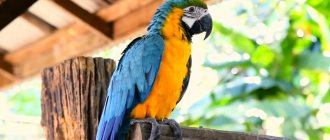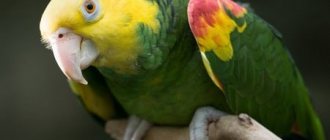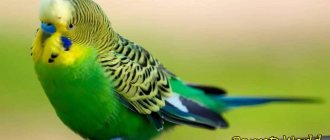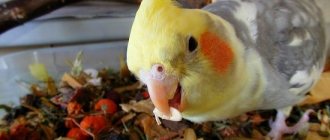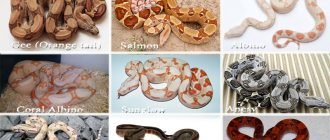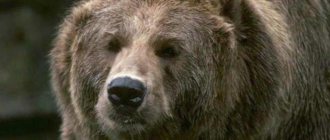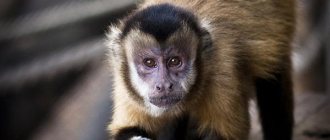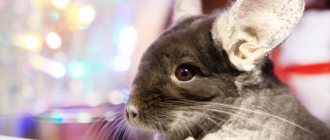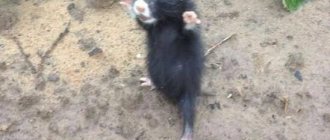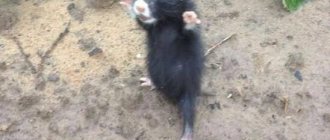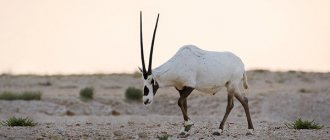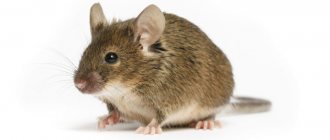Description and appearance
Blue macaws are flocking birds. They were first described at the beginning of the 19th century by the naturalist and explorer Johann von Spix. The average size of an adult varies from 55 to 60 cm. The weight of the bird does not exceed 400 g. The wingspan of a blue parrot reaches 50 cm.
Exterior description:
- large head;
- massive black beak with a curved end;
- the iris of the eyes is light yellow;
- the face is not feathered and has a gray tint;
- the wings are large – up to 30 cm in length;
- massive paws of gray color.
Health
Representatives are susceptible to a viral infection called Macaw Wasting Syndrome. Like other parrots, they may resort to self-mutilation by plucking feathers if they are neglected or become bored.
A well-balanced diet and adequate exercise are essential to keeping poultry healthy. Macaws are prone to obesity, fatty liver disease and fatty tumors.
The list of common diseases also includes:
- psittacosis;
- bacterial, fungal or viral infections;
- beak malformation;
- papillomas;
- kidney disease;
- allergies;
- lipomas;
- psittacosis.
See also: Macaw parrot - varieties and care at home
Signs of diseases:
- lethargy;
- drooping wings;
- saggy body;
- sudden mood swings;
- poor appetite;
- partially closed or watery eyes and swollen eyelids;
- squeaky voice;
- labored breathing;
- excessive salivation.
Ornithologist Albina shared her expert opinion: “Be careful! Psittacosis is an infectious disease caused by bacteria. It can be transmitted to humans by inhaling dry fecal dust from cages or by contact with an infected parrot.”
Habitat and lifestyle
Blue parrots are not currently found in the wild as they are an endangered species. Today there are about 500 individuals worldwide. They all live in reserves or with breeders. When these beautiful birds still lived in their natural environment, they could be seen in Brazil.
Blue parrots were found in the areas between two large rivers - the Parnaiba and São Francisco. In the last 30 years, only one bird has been seen in northeastern Brazil.
Blue parrots lived in tropical forests and palm groves. The hollows of old trees served as their nests.
Macaws are diurnal. During extreme heat, they usually hide in dense forests. Blue parrots have a peaceful disposition.
Find out more - “How long can macaws live?”
Reference. The blue macaw used a clever way to protect itself from predatory animals. When threatened with attack, the bird pretended to be dead. This helped her survive.
Birds eat plant foods. Their diet is dominated by:
- tropical fruits;
- nuts;
- seeds;
- green stems and leaves of plants;
- rhizomes of shrubs.
Blue parrots easily crack the dense shell of nuts thanks to their powerful beak, which resembles a wire cutter.
Interesting facts about the animal
In some situations, when this species of parrot is in danger, it falls to the ground with its paws up, pretending to be dead. In many cases, she manages to deceive the enemy and save her life.
Today the species is still considered endangered. The threat of complete extinction can only be stopped by everyone's efforts.
Still have questions about the Blue Macaw or have something to add? Then write to us about it in the comments, this will make the material more useful, complete and accurate.
Reasons for the extinction of a species in nature
Blue macaws almost disappeared from the face of the earth not because of predators. The culprit of their extinction is man. People are poaching and ruthlessly cutting down forests in South America. This is the main reason for the extinction of the species. The birds simply have nowhere to live and nothing to eat.
In such conditions, birds cannot reproduce. At first, due to deforestation of the islands, they moved to the continent in search of habitat and food. After a few decades, blue parrots completely disappeared.
In the 90s of the last century, one female, which had previously been kept by a collector, was released into the wild. However, after some time she died. And in 2000, the last male died. Thus, not a single representative of this species remains in its natural habitat.
Stressful situations
Just like humans, birds are greatly affected by stress. For parrots, moving to a new home, adding another pet to the house, giving birth to chicks, and changing their usual food to something new becomes stressful. In a word, everything that happens rarely and unexpectedly. Under no circumstances should one be skeptical about such sensitivity of birds and perceive it as spoiled behavior. What you consider unimportant is very important for the bird, and your ignorance of its needs can cause the manifestation of the disease.
Most often, stress pushes parrots to self-pluck. In difficult times for birds, they calm down by plucking healthy and beautiful feathers from their bodies. If this problem is not resolved in time, the bird may remain bald and become seriously ill, because feathers allow it to maintain an acceptable body temperature and not become hypothermic. During times of stress, you need to show maximum attention to the bird and if you detect the slightest deviations from the usual behavior, diet and health status, take her to the veterinarian.
It is best to avoid stressful situations altogether. The nervous shocks experienced by the bird leave an imprint on its general condition. The more stress a bird experiences, the higher its chances of premature death. Everything is like with people: the calmer life is, the longer it is, and the stronger the health.
Captivity
Buying a blue parrot is now almost impossible. Such birds are protected by Brazilian law and are carefully monitored. However, those who want to take part in the program to save the species can join the CPRAA community and start breeding such birds. Its members are subject to strict requirements.
One of them is to provide the feathered pet with a spacious, well-equipped enclosure and everything necessary.
Blue parrots in captivity are fed mixtures that include oats, millet, millet, corn and plant seeds. In addition to dry food, birds are given vegetables and fruits:
- apples;
- pears;
- melon;
- watermelon;
- pumpkin;
- zucchini;
- cabbage
Walnuts, pumpkin seeds and sunflower seeds are offered to blue parrots in small quantities. Hazelnuts and almonds are contraindicated for poultry. You can give dried fruits.
How much does one lovebird cost?
So, on average, the price for lovebirds varies from 500 to 5000 rubles. As a rule, the three most popular types of lovebirds are rosy-cheeked, masked and fisher's. The price largely depends on two factors: where exactly you buy the parrot (from hand, from a breeder, in a pet store)
Interesting materials:
How to understand that a drill is for wood? How do you know if raw yeast is working? How can you tell if the tripe is cooked? How to understand that you are blacklisted on an iPhone? How to understand that you are on the black list of a Beeline subscriber? How do you know if you are allergic to milk? How can you tell if there is no freon in your air conditioner? How can I understand that my wife doesn’t love me anymore? How to understand differential equations? How can you tell if your ex wants the relationship back?
Reproduction
Blue parrots are ready to start a family at the age of 5 years. Reproduction occurs once a year. The female chooses a suitable nest in the hollow of a living or dead tree and lines it with dry grass, twigs and her own feathers. After the end of mating games, the bird lays no more than 3 eggs, each with an interval of 3-4 days. The incubation process lasts 26-30 days. The male takes care of the partner’s food and guards the nest, but he himself spends the night outside it.
Blue parrot chicks hatch one at a time. They are born without feathers. Their eyes are closed. The chicks become fully fledged only after 4 months. Little blue macaws compete with each other for food. In the wild, only one or two chicks usually survive. This is another reason why birds become extinct in their natural environment - reproduction occurs very slowly. Parents continue to feed their babies until they are six months old. Grown young animals stay close to their family throughout the year.
In captivity, pairs of birds are formed by breeders and ornithologists.
Since there are very few blue parrots left, the risk of inbreeding must be taken into account when breeding. Mating of birds that are related leads to the birth of chicks with various pathologies.
Natural enemies
The main natural enemy is considered to be an artificially created hybrid of the African bee, which was mistakenly released into the wild by scientist Warwick Kerr in Brazil in 1957.
Aggressive and rather large insects began to displace blue macaws from tree hollows where these birds settled from year to year. The second natural enemy of these birds was man. The population was damaged by predatory animals and birds.
Snakes are especially dangerous for these parrots. They can completely destroy the clutch or eat defenseless chicks.
Revival of the species
Serious work is now underway to restore the population of blue parrots. In Brazil, a specific plan has been developed to recreate the species. Attempts have been made repeatedly to introduce captive-bred parrots into the wild, but so far they have been unsuccessful.
However, thanks to the efforts of private breeders and nursery workers, over 15 years it has been possible to increase the number of blue parrots by at least 3 times.
I would like to hope that the extinct species can be restored. However, this requires stopping deforestation. Perhaps in 20-30 years, beautiful bluebirds will once again inhabit the palm groves of Brazil.
Price
Depending on the species, the price of a blue macaw starts at $1,000. The cost of a parrot reached up to $40,000 in some countries.
These birds are very expensive to keep and can cost over $10,000. For this reason, they are often seen in zoos rather than in homes.
Having a Blue Macaw as a pet is a big responsibility as it requires special care and attention. But the owners of this bird will never regret the purchase. This majestic parrot with a strong beak and wide wings is not only incredibly beautiful, but also smart, active and talkative.
How do you like the article?
Lesser Blue-fronted Macaw
This species is found in Guyana, Brazil, French Guiana and Suriname. Blue-fronted macaws live in open areas of tropical forest, palm groves and farm plantations. The species is numerous.
In the genus of macaws, these are the representatives of the smallest size; the body length of the blue-fronted macaw does not exceed 34-35 centimeters. Blue-fronted macaws live in family groups or pairs. They have a protective coloring, thanks to which they hide in the leaves. The color of the feathers is quite modest. The upper body is dark green and the lower body is yellow-green. The edges of the wings and forehead are blue or gray-blue. The underside of the tail and the inside of the flight feathers may be olive yellow or dark red.
The Blue-fronted Lesser Macaw (Ara nobilis) is the only species of the genus.
They feed on plant seeds, fruits, vegetables and nuts. The mating season for blue-fronted macaws is observed in February-June. They most often make nests in the hollows of palm trees.
Although this species has long been kept in captivity, cases of successful breeding are rare.
